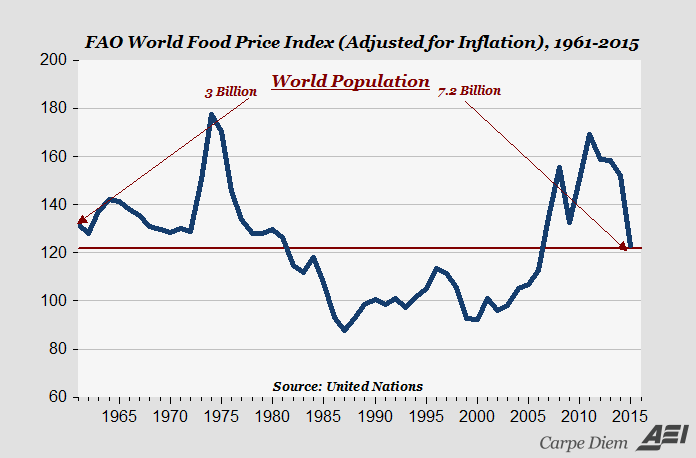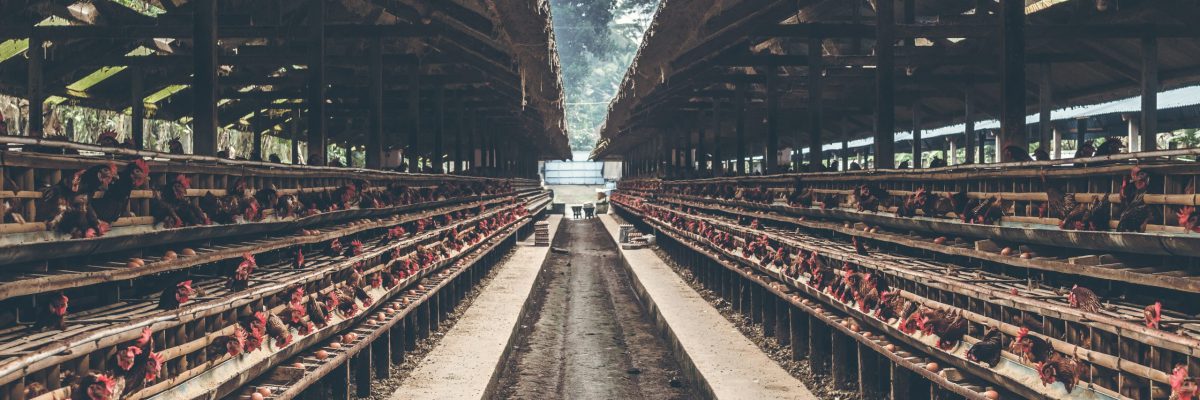Today’s reasonable global food prices may be considered a small miracle. According to the United Nations, despite many changing factors, today’s prices are still similar to food prices in the early 1980s. In comparison to the 1980’s, in our time the world population has rapidly increased (7.3 Billion people), water resources have decreased, land resources diminished and seed prices have been raised(mainly due to the global Monsanto-Bayer agricultural biotechnology monopoly). All of these factors could have raised food prices tremendously, yet they stayed the same. In the 1980s the world population was about half of today (about 4 billion people) – see graph. How is that possible, and how does it correlate with the number of hungry people in the world?

These figures are mainly attributed to the rapid process of globalization that has taken place in the last 25 years, the collapse of political borders, the creation of a common global market, the streamlining of goods and money transfer processes, the reduction of distances and the creation of common interests as well as a common language. At the same time, the concept of “food security” that was commonplace in the post-World War II bipolar international viewpoint has diminished. During this period, until the early 1990s, the world was divided in two, the US-led Western bloc and the Soviet-led Soviet bloc. The competition between the blocs as well as the huge investment in military resources, withdraw worldwide attention from a host of problems, and pushed the solution to the huge gaps between the West and the Third World countries to the back of the mind.
From the mid-1990s, the system became polarized because of the strengthening of countries such as China, Japan, India, and Brazil, the disintegration of the soviet bloc and the USSR and the creation of the European Union. Food security has weakened and nations have stopped relying on self-growing food and started trading resources for food, with countries where food production is cheaper, countries with ample water and land for agriculture or countries with advanced food technologies that have replaced expensive and inefficient manpower.Over time, growing food in greenhouses has developed immensely, the use of drips and recycled water has evolved, computerized salinity control of the soil has been used, the treatment of plant diseases increased, the use of water, and the control of air temperature have been monitored. There is a significant improvement in the use of fertilizers (and in particular the cessation of use of toxic substances such as DDT), the use of pesticides has been reduced by strengthening the plant through genetic engineering, resistant seed production, the pesticides have become more effective and the use of biological pesticides has been increased.

All of these have led to the creation of surplus food, especially grains, which has created a downward food price trend, which continues to this day.However, the ecological aspect has been neglected. The feeding of billions of people has major environmental impact and causes the elimination of many ecological environments such as rainforest deforestation used to clear lands for agricultural areas, destruction of the marine environment due to overfishing and the destruction of aquifers due to seepage of pesticides and soil fertilizers from the ground.In spite of all these, there are still many societies in the world suffering from hunger, even though there is disposal of surplus food in the world.
I would risk saying this is the price that humanity pays for maintaining high food prices. The transfer of surplus food to poor and underdeveloped societies could hurt the global industry and lower its prices to the point of economic disadvantage.Regardless of this, there are still countries in the world, such as Israel, that continue to adopt the outdated concept of food security, fearing that at times of need the global markets will exert pressure to change policies by restricting food exports to the region. This view means that although Israel is limited in land and water resources, it tends to focus on agriculture markets that are more suited to colder and rainier climates, such as dairy farms and field crops. It is true that today Israel’s use of purified water has increased and with it water shortages are less significant and also the country has started to import some food from other countries, but still a country located in a desert bloc and undergoing desertification processes must recalculate and examine the environmental damage of growing agriculture in its fields.
Israel should ask itself, are they willing to sacrifice all the rivers of Israel and their ecological environments for the sake of water used for agriculture?
This article was edited by Tammy Kaplan Zabari.




